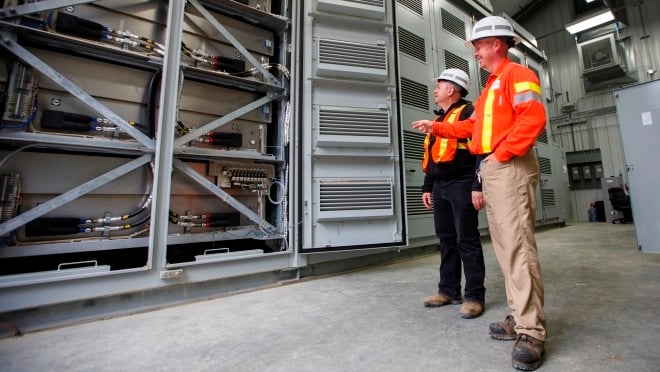
Having been subject to discussion for years within the academic sphere, energy storage projects have become a topic of high interest to energy sector focused investors in recent years.
Decreasing cost curves, changing regulatory environments within the energy markets such as deregulation and shifts away from subsidised renewables to market pricing modes, and evolving software capabilities, are increasing investor confidence in energy storage investments and result in increased demand for investment opportunities.
Enjoy 12 months of exclusive analysis
- Regular insight and analysis of the industry’s biggest developments
- In-depth interviews with the industry’s leading figures
- Annual digital subscription to the PV Tech Power journal
- Discounts on Solar Media’s portfolio of events, in-person and virtual
While this seems to be true especially for more mature renewable energy markets like Europe, the United States and several others, investors are facing the problem that energy storage projects as investments are – in most cases – discussed on a very abstract basis. Only considering the “big picture” and seeing the project as a future pillar of the energy market leaves out details such as the complexity coming with energy storage investments in practice.
In my opinion, the propensity to drastically reduce complexity by discussing energy storage as high-level topic has developed based on two major factors:
Firstly, energy storage is still a new topic in the market compared to the long history of energy generation and transmission. Hence, while accumulators and especially batteries seem to be part of consumers' lives ever since, the discussion about energy storage as a viable part of the electricity market structure is relatively trendy and new. In addition, due to the high diversity of technology types and their evolution, economies of scale and market consolidation (as seen currently in the photovoltaic market) are not yet reached. This leads to different potentials, resulting in an ultimate mess of investment cases. Supported by the fact that storage investments are often declared as a “venture capital topic”.
Second, the high variety of different operational modes results in a high density in varying underlying business models. This depends heavily on local electricity market structures, including installed generation capacities, energy balance, share of renewables and subsidy situation.
In summary, the combining factors of a high density of different technology types and development stages as well as the high variety of different usage types have led to a situation where energy storage is often considered only as party of the big picture, thus not helping investors in getting viable information most relevant to them.
What is needed is a description on how to break down energy storage investments into viable pieces, giving investors and project owners an overview on what to discuss when considering a partnership.
From my perspective, the right equation for a first discussion between developers and investors is the following:
Project Stage + Technology Type + Usage Mode = Business Case under consideration
Considering financing or investing in relation to storage projects, it’s all about the exchange of the right information in the forefront, in order to correctly match the expectations of both parties.
So, what information are investors looking for?
As mentioned above, my experience has shown that project stage, technology type and usage mode are among the top factors which will decide if a more detailed conversation between the parties would present a dual benefit:
1. Project Stage:
At first, it is of utmost importance for every investor to know the current stage of the project. Is it an R&D Technology project, implying more risk and returns in the long-run or is it rather a commercial storage unit, relating to lower IRR expectations but real cash-flows in the near term?
2. Technology Type:
Giving investors a brief but meaningful overview in the considered technology as well as the current status. One example would be the maturity of the technology in a pumped hydro storage plant, compared with the relative immaturity of fuel cells. A menaingful overview leads to a better understanding on technology risk, implied cost expectations (CAPEX requirement) as well as easiness of project realisation.
3. Usage Mode
As there are a lot of different usage modes of energy storage units, varying from providing black-start capacity and frequency regulation to electric time shift (aka solar load shifting) or electric supply reserve capacity, the underlying economics and business models can vary heavily. Providing the investor with the planned mode of usage and indicating on how and by whom the power is fed into the generation unit, as well as information on who is the off-taker of the electricity speeds up the understanding of the business case and allows to briefly validate the business model upfront, thus avoiding long discussions and clarifications.
Summarised, our experience in connecting project developers with interested investors through our project e-nable.eu has shown the following key findings:
Abstract documentation – or even very technically focused details on the other hand – can result in a lower level of interest, as the investment opportunity fails to be showcased properly.
Hence, offering clear and well-structured information, containing relevant technological information and outlining the main levers of the planned business case, is vital. A well prepared, compact information set can ease discussions between investors and project developers immensely, and – last but not least – supports a positive start to the business relationship.


